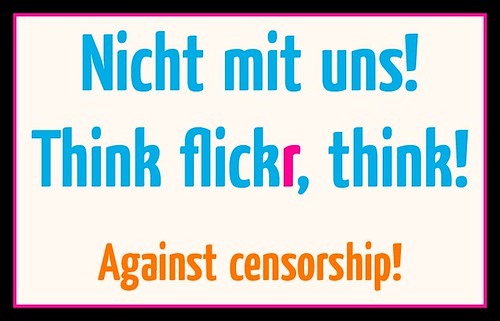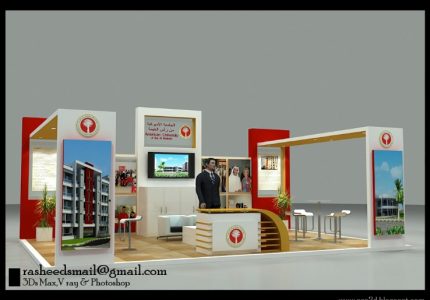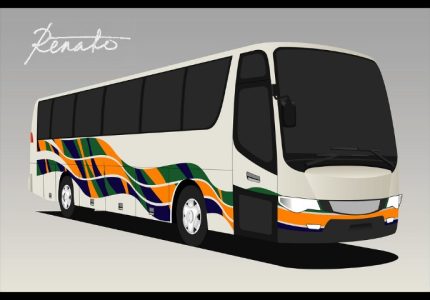Overview of Graphic Design Services
Graphic design services encompass a wide range of visual solutions tailored to meet the diverse needs of businesses and individuals. From creating captivating logos and branding materials to designing engaging marketing collateral and digital content, these services play a crucial role in establishing a strong visual identity. Whether for print or digital platforms, professional graphic design helps communicate messages effectively and makes a lasting impression on target audiences.
Definition and Scope
Graphic design services encompass a broad range of visual communication strategies aimed at conveying messages effectively through creative imagery, typography, and layout. These services play a crucial role in branding, advertising, and digital content creation, helping businesses establish a strong visual identity.
- Logo Design and Branding: Creating distinctive logos and developing brand guidelines to ensure consistent visual identity.
- Print Design: Designing materials such as brochures, posters, flyers, and packaging that are physically produced.
- Digital Design: Crafting visuals for websites, social media, email campaigns, and mobile applications.
- Advertising Design: Developing compelling advertisements for various media platforms to attract and engage audiences.
- Illustration Services: Producing custom artwork that complements and enhances a brand’s visual narrative.
The scope of graphic design services is extensive, covering concept development, layout creation, visual identity, and multimedia production. It involves understanding client needs, target audiences, and current design trends to deliver impactful visuals that support marketing and communication goals.
Importance in Business and Branding
Graphic design services encompass a wide range of visual communication solutions that help businesses convey their message effectively. These services include logo creation, branding, packaging, advertisements, websites, and social media graphics, all crafted to attract and engage target audiences.
In today’s competitive market, graphic design plays a vital role in establishing a company’s identity and enhancing brand recognition. Well-designed visuals create a memorable impression, foster trust, and differentiate a business from its competitors. Strong branding through compelling graphic design can influence customer perceptions and drive loyalty.
Furthermore, professional graphic design elevates the overall perception of a business, making products and services appear more appealing and credible. It supports marketing strategies by providing clear, consistent, and visually appealing messages that resonate with consumers. Investing in quality graphic design services is essential for businesses aiming to build a strong, recognizable brand presence in the marketplace.
Types of Graphic Design Services
Graphic design services encompass a diverse range of creative solutions tailored to meet various visual communication needs. From branding and logo creation to digital and print media, these services help businesses effectively convey their messages and establish a strong visual identity. Understanding the different types of graphic design services can help clients choose the right expertise to achieve their goals.
Logo Design and Branding
Graphic design services encompass a wide range of creative solutions to help brands communicate effectively and visually stand out. Among these services, logo design is a fundamental aspect, focusing on creating unique symbols that represent a company’s identity and values. Branding, on the other hand, involves developing a cohesive visual identity, including color schemes, typography, and overall style, to ensure consistency across all marketing platforms. These services are essential for establishing a strong presence in the marketplace and building brand recognition among target audiences.
Marketing and Advertising Materials
Graphic design services encompass a wide range of visual solutions aimed at communicating messages effectively and enhancing brand identity. These services include creating logos, branding materials, and visual identity systems that establish a company’s image. Additionally, graphic designers develop marketing and advertising materials such as brochures, flyers, posters, banners, and digital ads to promote products and services. They also produce packaging designs that attract customers and convey product information. Web design, including layout and UI/UX design for websites and mobile apps, is another essential aspect of graphic services. Overall, graphic design plays a crucial role in crafting compelling visuals that engage audiences and support marketing strategies.
Website and Digital Media Design
Graphic design services encompass a wide range of creative solutions tailored to meet various business and personal needs. These services include branding, logo design, print design, packaging, and advertising materials, all aimed at creating visually compelling and effective communication. Professional graphic designers work to craft visuals that enhance brand identity and convey messages clearly and engagingly.
Website and digital media design are crucial components of modern graphic design services. This includes designing user-friendly websites, mobile applications, social media graphics, digital banners, and email templates. These designs focus on aesthetics, usability, and functionality to attract and retain online audiences, ensuring brands have a strong digital presence. The goal is to create cohesive and visually appealing digital experiences that align with a company’s branding and marketing objectives.
Packaging Design
Packaging design is a vital aspect of graphic design services that focuses on creating visually appealing and functional packaging for products. It involves the development of labels, boxes, containers, and wraps that not only protect the product but also attract consumers and communicate brand identity. Skilled graphic designers consider elements such as color, typography, imagery, and structural design to ensure the packaging stands out on shelves and enhances the overall customer experience.
Print Design (Brochures, Flyers, Posters)
Print design is a fundamental aspect of graphic design services, focusing on creating visually appealing materials that communicate a message effectively. This category includes designing brochures, flyers, and posters, each serving different purposes in marketing and communication strategies. Brochures are often used for detailed presentations of products or services, providing comprehensive information in a well-organized layout. Flyers are typically shorter, eye-catching promotional tools meant to grab attention quickly and deliver a concise message. Posters are large-scale visual displays designed to capture attention from a distance, ideal for event promotion, advertising campaigns, or public awareness. Skilled graphic designers tailor these print materials to align with branding guidelines, ensuring consistent and impactful visual communication across various printed media.
Social Media Graphics
Social media graphics are a vital component of graphic design services that focus on creating visually engaging content tailored for various social media platforms. These designs help brands increase engagement, build brand identity, and communicate messages effectively to their target audience.
- Social Media Posts: Customized images or graphics designed to accompany posts on platforms like Instagram, Facebook, Twitter, and LinkedIn.
- Cover Photos and Banners: Eye-catching cover images and banners that represent a brand’s identity on social media profiles.
- Infographics: Visually appealing graphics that present information, data, or knowledge quickly and clearly.
- Social Media Advertisements: Creative graphics used in paid ads to attract clicks and conversions.
- Profile and Post Icons: Custom icons and avatar images that enhance brand recognition across social platforms.
Process of Providing Graphic Design Services
Providing graphic design services involves a collaborative process where designers work closely with clients to transform ideas into visual solutions. It typically begins with understanding the client’s goals and requirements, followed by brainstorming, concept development, and creating initial drafts. Through feedback and revisions, the final design is refined to ensure it effectively communicates the desired message and aligns with the client’s brand identity. This structured process guarantees a professional and tailored visual outcome that meets the client’s expectations.
Client Consultation and Briefing
The process of providing graphic design services begins with a thorough client consultation and briefing, which lays the foundation for a successful project. It involves understanding the client’s needs, goals, target audience, and preferences to ensure the final design aligns with their vision.
- Initial Client Contact: Establish communication and discuss the project scope.
- Understanding Client Needs: Gather information about the project requirements, objectives, and desired outcomes.
- Creative Brief Development: Collaborate with the client to create a detailed brief outlining deliverables, branding guidelines, target audience, and timeline.
- Research and Inspiration: Conduct industry and competitor research to inform the design concept.
- Conceptualizing Ideas: Develop initial sketches or digital drafts based on the brief.
- Client Presentation and Feedback: Present concepts to the client and gather their feedback and preferences.
- Revisions and Refinements: Make adjustments according to client input to refine the design.
- Final Approval: Obtain client approval on the completed design before preparing files for production.
- Delivery of Final Files: Provide the client with the necessary high-resolution or web-optimized files for implementation.
Research and Concept Development
The process of providing graphic design services begins with thorough research and understanding of the client’s needs, target audience, and industry trends. This initial phase involves gathering relevant information to ensure the design aligns with the client’s brand identity and objectives. Following research, the concept development stage commences, where designers brainstorm and create preliminary ideas and visual concepts. These concepts are refined through sketches, mood boards, and digital drafts to explore different directions. Collaboration with the client during this phase is essential to ensure the evolving designs meet expectations and effectively communicate the intended message. Once a concept is approved, the designer moves forward with detailed planning and execution, translating ideas into polished visual materials. Overall, research and concept development are crucial steps that lay the foundation for successful graphic design projects, ensuring creativity, relevance, and client satisfaction.
Design Drafting and Revisions
The process of providing graphic design services typically begins with understanding the client’s needs and objectives, followed by initial consultations to gather relevant information about the project. Once the requirements are clear, the designer moves into creating design drafts or concepts that reflect the desired style and message. These drafts are then presented to the client for review and feedback. Based on the client’s input, the designer makes necessary revisions to refine the design, ensuring it aligns with expectations. This iterative process continues until the client is satisfied with the final product, after which the completed design is delivered in the agreed formats. Throughout the process, effective communication and collaboration between the designer and client are essential to achieve a successful outcome.
Finalization and Delivery
The process of providing graphic design services involves several key stages that ensure the final product meets client expectations and quality standards. It begins with a detailed understanding of the client’s needs, goals, and target audience, followed by initial concept development and brainstorming. Designers then proceed with creating preliminary sketches or digital mockups to establish a visual direction. After receiving feedback, revisions are made to refine the designs until the client approves the concept. Once approved, the designer prepares the final high-resolution files, ensuring all technical specifications are met. The finalization phase also includes quality checks to detect and correct any errors or inconsistencies. Delivery involves sharing the completed designs through secure digital means or physical formats, along with any necessary style guides or instructions for usage. This structured approach ensures a smooth workflow from concept to finished product, resulting in effective and professional graphic design solutions.
Follow-up and Support
The process of providing graphic design services involves a series of carefully coordinated steps to ensure the client’s vision is accurately brought to life. It begins with understanding the client’s needs and objectives through detailed discussions and briefings. This is followed by research and concept development, where initial ideas and sketches are created to explore different visual directions. Once a concept is selected, the designer proceeds with refinement, creating detailed designs and mockups for review. After feedback has been incorporated, the final design is prepared for delivery in the required formats. Follow-up and support are essential components of the service, involving ongoing communication to address any adjustments, provide additional versions if needed, and ensure the design functions effectively across various platforms. This continuous support helps build client satisfaction and long-term relationships, guaranteeing that the graphic design solutions remain relevant and impactful over time.
Benefits of Outsourcing Graphic Design
Outsourcing graphic design offers numerous advantages for businesses seeking creative and professional visual solutions. By partnering with skilled designers, companies can access high-quality work without the need to maintain an in-house team, leading to cost savings and increased flexibility. Additionally, outsourcing allows organizations to benefit from fresh perspectives and specialized expertise, ultimately enhancing their brand image and marketing efforts.
Cost-Effectiveness
Outsourcing graphic design services offers significant cost-effectiveness, allowing businesses to access professional design talent without the expenses associated with hiring full-time staff. By partnering with external designers or agencies, companies can eliminate costs related to salaries, benefits, office space, and equipment. This flexible approach enables organizations to scale their design needs up or down based on project requirements, ensuring they only pay for the services they require. Additionally, outsourcing can reduce overhead costs and minimize the time spent on recruitment and training, ultimately providing a budget-friendly solution for high-quality graphic design work.
Access to Specialized Skills
Outsourcing graphic design as a service offers numerous advantages, primarily through providing access to specialized skills that may not exist within your internal team. This approach allows businesses to enhance their visual branding and marketing materials without the need for extensive training or hiring additional staff.
- Access to Expert Talent: Outsourcing connects you with highly skilled designers who have extensive experience and up-to-date knowledge of design trends and tools.
- Cost Efficiency: It often proves to be more affordable than maintaining an in-house team, eliminating expenses related to salaries, training, and equipment.
- Flexibility and Scalability: Outsourced services can easily adapt to your project’s demands, allowing you to upscale or downscale your design needs as required.
- Faster Turnaround Times: Professional design agencies or freelancers typically have streamlined workflows, ensuring quicker delivery of your projects.
- Focus on Core Business Activities: By outsourcing graphic design, your team can concentrate on strategic initiatives while experts handle the creative aspects.
- Access to Innovative Ideas: External designers bring fresh perspectives and creativity, which can elevate your branding and marketing efforts.
Time Savings
Outsourcing graphic design offers significant time savings by allowing businesses to focus on core activities while skilled professionals handle visual projects efficiently. External designers often work faster due to their expertise and experience, reducing the turnaround time for design revisions and final delivery. This streamlined process helps companies meet deadlines more reliably, ensuring timely marketing campaigns and brand updates. Additionally, outsourcing removes the need for internal training and resource allocation, enabling teams to dedicate their efforts to strategic tasks rather than the complexities of graphic design.
Fresh Perspectives
Outsourcing graphic design offers numerous benefits, including access to specialized skills and expertise that may not be available in-house. This allows businesses to enhance the quality of their visual content without the need for extensive training or hiring full-time staff. Additionally, outsourcing provides flexibility in managing project workloads and budgets, making it easier to scale design efforts up or down as needed.
One of the key advantages of outsourcing graphic design is gaining fresh perspectives. External designers bring new ideas, trends, and creative approaches that can revitalize a brand’s visual identity. This outside viewpoint can lead to innovative designs that resonate more effectively with target audiences, giving businesses a competitive edge in their marketing efforts.
Choosing a Graphic Design Service Provider
Selecting the right graphic design service provider is essential for bringing your creative vision to life and establishing a strong visual identity. A professional design partner can help craft compelling visuals that resonate with your target audience, enhance your brand’s credibility, and support your marketing goals. Careful consideration of experience, portfolio, and service offerings ensures you choose a provider capable of delivering high-quality, innovative designs tailored to your needs.
Portfolio and Experience
When selecting a graphic design service provider, it is essential to evaluate their portfolio and experience to ensure they can meet your specific needs. A strong portfolio demonstrates their creative capabilities, versatility, and style, allowing you to assess whether their previous work aligns with your brand vision. Additionally, an experienced provider is likely to have a deeper understanding of design principles, industry standards, and effective communication strategies, which can result in a more polished and impactful final product. Taking the time to review their past projects and inquire about their background can help you make an informed decision and find a partner capable of delivering high-quality graphic design services tailored to your goals.
Client Testimonials and Reviews
Choosing the right graphic design service provider is crucial to ensuring your brand’s visual identity is compelling and effective. Look for a provider with a strong portfolio that demonstrates versatility and creativity, and check their experience in your industry. It’s also important to consider their communication style and willingness to collaborate to bring your vision to life. Client testimonials and reviews can offer valuable insights into their reliability, professionalism, and quality of work. Positive feedback from satisfied clients often indicates a provider’s ability to deliver innovative designs on time and within budget, helping you make an informed decision for your branding needs.
Communication and Collaboration Process
Choosing a graphic design service provider is a crucial step in ensuring the success of your visual branding and marketing efforts. A reliable provider not only offers creative expertise but also understands your brand’s vision and goals, facilitating a seamless collaboration process. Clear communication from the outset helps define project scope, expectations, and timelines, minimizing misunderstandings and streamlining workflows.
Effective communication and collaboration are essential throughout the design process. Regular updates, feedback sessions, and open dialogue allow both parties to stay aligned and make necessary adjustments quickly. Using collaborative tools and establishing a structured review process ensures that the project progresses smoothly and meets your quality standards. Building a strong partnership with your service provider ultimately results in innovative, professional design solutions that effectively convey your brand message.
Pricing and Packages
Choosing the right graphic design service provider is essential to ensure your brand’s visual identity is compelling and professional. Consider the provider’s portfolio, experience, and understanding of your industry to find a good match. Clear communication and a demonstrated ability to meet deadlines are also important factors in the decision-making process.
Pricing and packages for graphic design services can vary widely depending on the scope of the project, the complexity of the designs, and the provider’s reputation. Many providers offer tiered packages that include different levels of service, such as basic branding, social media graphics, or comprehensive branding solutions. Always review what is included in each package to ensure it meets your needs and budget. It’s also advisable to inquire about additional costs for revisions or extra services to avoid unexpected expenses and choose a package that aligns with your goals and financial plan.
Turnaround Time and Flexibility
When selecting a graphic design service provider, it is essential to consider their turnaround time and flexibility to ensure their services align with your project deadlines and evolving needs. A reliable provider should deliver quality work promptly and be adaptable to changes throughout the design process.
- Turnaround Time: Evaluate how quickly the provider can complete your projects and whether they offer clear timelines. Prompt delivery helps keep your project on schedule and avoids unnecessary delays.
- Flexibility: Choose a provider who demonstrates willingness to incorporate your feedback, make revisions, and adjust to your changing requirements. Flexibility ensures that the final design genuinely meets your vision.
- Communication: Effective communication is key to understanding your needs and ensuring timely updates. An accessible provider facilitates smooth collaboration and quicker turnaround.
- Experience and Workflow: Consider their experience in managing projects of similar scope and their workflow efficiency, which directly impacts their ability to meet deadlines and adapt as needed.
Emerging Trends in Graphic Design Services
The landscape of graphic design services is constantly evolving, driven by technological advancements and shifting consumer preferences. Emerging trends such as immersive visual experiences, minimalistic designs, and the integration of artificial intelligence are transforming how businesses communicate visually. Staying up-to-date with these innovations allows brands to stand out in a competitive market and effectively engage their audiences through innovative and compelling designs.
Minimalism and Flat Design
Emerging trends in graphic design services reveal a strong shift towards minimalism and flat design, reflecting a desire for clarity and simplicity in visual communication. Minimalism emphasizes clean lines, limited color palettes, and a focus on essential elements, making designs more versatile and impactful across digital and print media. Flat design, characterized by two-dimensional elements and the absence of complex textures or gradients, enhances user experience by creating straightforward and easily recognizable visuals. These trends cater to the growing need for fast, accessible, and aesthetically pleasing graphics, allowing brands to convey their messages effectively without unnecessary clutter. As technology evolves, these styles also adapt well to responsive designs, ensuring visual consistency across various platforms. Overall, minimalism and flat design are shaping the future of graphic design services by prioritizing user-centric, streamlined visuals that resonate in a digital-first world.
Responsive and Mobile-First Design
Emerging trends in graphic design services highlight the increasing importance of responsive and mobile-first design. As more users access websites and digital content through smartphones and tablets, designers prioritize creating layouts that adapt seamlessly to various screen sizes. This approach ensures a consistent and engaging user experience across all devices, which is essential for brand visibility and customer engagement. Mobile-first design also encourages designers to focus on essential elements, reducing clutter and improving load times, thus enhancing overall accessibility and usability. Staying updated with these trends allows graphic design professionals to deliver modern, user-centric solutions that meet the evolving demands of the digital landscape.
Incorporation of Motion Graphics and Animations
Emerging trends in graphic design services are increasingly focusing on the incorporation of motion graphics and animations to create more dynamic and engaging visual experiences. These advancements allow brands to communicate their messages more effectively by adding movement and interactivity to their designs, capturing audience attention in a crowded digital landscape. Motion graphics enable designers to bring static visuals to life, making logos, advertisements, and social media content more memorable and impactful. As technology evolves, the integration of animations in graphic design is becoming more seamless and accessible, empowering businesses to stand out and deliver innovative content that resonates with their target audiences.
Use of AI and Automation Tools
Emerging trends in graphic design services are increasingly influenced by advancements in AI and automation tools, revolutionizing how designers create and deliver their work. These technologies enable faster, more efficient workflows by automating routine tasks such as image editing, logo generation, and layout adjustments. AI-powered design platforms offer intelligent assistance, providing creative suggestions and optimizing visual elements to improve aesthetic appeal and user engagement. Additionally, automation allows for seamless customization and real-time prototyping, reducing project turnaround times. As a result, graphic design services are becoming more accessible, cost-effective, and innovative, empowering designers to focus on strategic, creative aspects while leveraging AI and automation for operational efficiency and enhanced client outcomes.
Sustainability and Eco-Friendly Design Practices
Emerging trends in graphic design services are increasingly aligned with sustainability and eco-friendly practices, reflecting a global shift towards environmental responsibility. Designers are adopting sustainable materials, reducing waste, and utilizing digital solutions to minimize their carbon footprint. Innovations such as eco-conscious branding, green packaging designs, and environmentally aware advertising campaigns are gaining popularity among clients seeking to demonstrate corporate social responsibility. Additionally, the use of renewable resources, biodegradable inks, and energy-efficient digital tools are becoming standard in the industry. By integrating sustainability into their services, graphic designers are not only promoting environmental well-being but also helping brands attract conscious consumers who value eco-friendly practices.





